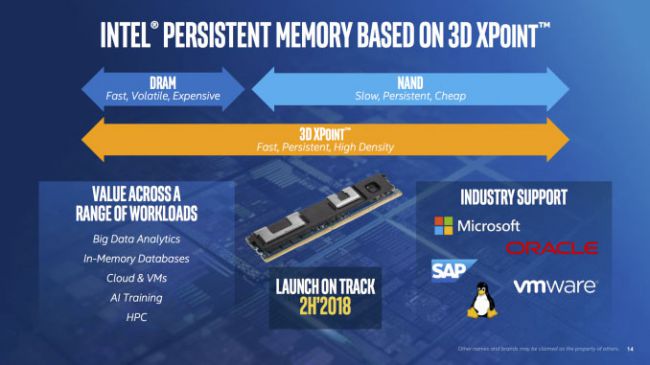At the USB Global Technology Conference on Tuesday, Intel shared an updated roadmap indicating it is on track to release Optane DIMMs in the second half of 2018.
Going up against DDR4 is the next frontier for 3D XPoint memory. Intel says Optane DIMMs will have the speed of DDR4 memory and be able to retain information without power. Up until now, it was one or the other: use slower NAND for data retention, or DRAM for speed.
Intel has already released a handful of Optane SSD products, starting with the DC P4800X, a standalone PCIe SSD for enterprise and datacenter clients. The company followed that up with Optane Memory modules aimed at delivering a speed boost to storage drives, especially mechanical hard drives, and more recently Intel launched a standalone SSD for consumers, the Optane SSD 900P.
While the initial focus has been on storage, Intel anticipates that 3D XPoint DIMMs will be an $8 billion market by 2021. It’s a bold prediction, and it comes down to how closely Optane DIMMs can compete with DDR4 (and presumably DDR5 at some point) memory, as well as pricing.
As to the latter point, Intel and Microsoft this week announced the completion of an expansion to their flash production facilities in Utah. This will enable the companies to boost production of 3D XPoint memory.

Intel’s Optane DIMMs will function as a memory-mapped device and have a much higher density than DDR4 memory, TomsHardware reports. They will also be mechanically and electrically compatible with DDR4, but will require a new proprietary interface. And on the outset, they will not be JEDEC-compliant, though that could change down the line.
Initially the focus will be on servers and datacenters with workloads consisting of big data analytics, cloud computing, AI training, and so forth. But if 3D XPoint DIMMs balloons into an $8 billion market as Intel anticipates, then it will only be a matter of time before it migrates into the consumer sector.
